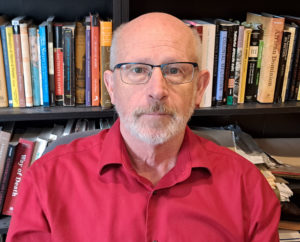Join us for the third in the public lecture series Representations of Colonization and De-Colonization. Drawing from art, museology, literature, science and philosophy, the series features lectures by leading international authorities exploring the exploitation, erasure, and systemic marginalization of Indigenous and Black peoples and their culture in Canada and abroad.
This series will explore topics such as: indigenous-settler relations, slavery in the north, decolonializing museums, indigenous knowledge in anti-colonial contexts, and intersections between slavery and colonial violence against the Mi’kmaq and African Nova Scotians in the Atlantic provinces.

Join us for a lecture by Dr. Philip Zachernuk, Associate Professor, History Department, Dalhousie University entitled, “Of Good Africans & Witch Doctors: The Entangled Story of How West African Activists Worked to Decolonize Late Colonial Film”
African activists in interwar Britain had long been critics of the way British popular culture represented Africa, not least in the powerful new medium of film. But when the Colonial Office during World War Two had to recruit Africans’ help to cast a major propaganda effort masquerading as a feature film, they acquired new powers, especially to revise two cinematic figures central to colonial imagery of Africa: the evil witch doctor and the grateful “Good African.” Unusually detailed records of the film’s production story reveal their struggle to challenge and even remove these characters. The revisions achieved during this process, however, cannot be adequately explained as a story of direct resistance or as the displacement of colonial images by the Africans’ vision. Rather, the revised figures were amalgams created by the unavoidably intersecting and overlapping efforts of Black American and Caribbean artists and activists in Britain, sometimes obtuse Colonial Office officials, liberal filmmakers, and diverse West Africans. While the need to decolonize culture might be obvious, the results of decolonial efforts need to be appreciated within the entangled historical process of their creation.
